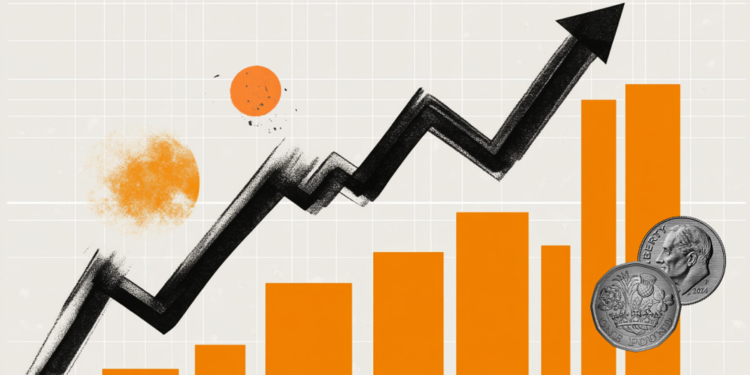- GBP/USD kicks off the new week on a positive note amid the emergence of fresh USD selling.
- Fed rate cut bets and US fiscal concerns weigh on the USD amid trade-related uncertainties.
- A weaker risk tone could limit losses for the safe-haven buck and cap the upside for the pair.
The GBP/USD pair regains positive traction at the start of a new week amid renewed US Dollar (USD) selling, though it remains below the 1.3500 psychological mark during the Asian session.
The Personal Consumption Expenditures (PCE) Price Index released on Friday pointed to further easing inflationary pressures in the US and bolstered the case for more policy easing by the Federal Reserve (Fed). Adding to this, concerns about the worsening US fiscal condition, fueled by the passage of US President Donald Trump’s “Big Beautiful Bill,” exert fresh downward pressure on the USD.
The British Pound (GBP), on the other hand, continues with its relative outperformance on the back of expectations that the Bank of England (BoE) would pause at its next meeting on June 18 and take its time before lowering borrowing costs further. This, in turn, is seen as another factor lending support to the GBP/USD pair. However, a weaker risk tone limits USD losses and might cap the pair.
The global risk sentiment took a hit after Trump stated on Friday that China is not committed to fulfilling the terms of the trade agreement reached in Switzerland. This comes on top of persistent geopolitical risk stemming from the Russia-Ukraine war and conflicts in the Middle East, which temper investors’ appetite for riskier assets and could offer some support to the safe-haven Greenback.
Traders now look forward to this week’s important US macro releases scheduled at the start of a new month, starting with the ISM Manufacturing PMI later this Monday. Apart from this, Fed Chair Jerome Powell’s appearance will influence the USD price dynamics and provide some impetus to the GBP/USD pair.
Pound Sterling FAQs
The Pound Sterling (GBP) is the oldest currency in the world (886 AD) and the official currency of the United Kingdom. It is the fourth most traded unit for foreign exchange (FX) in the world, accounting for 12% of all transactions, averaging $630 billion a day, according to 2022 data.
Its key trading pairs are GBP/USD, also known as ‘Cable’, which accounts for 11% of FX, GBP/JPY, or the ‘Dragon’ as it is known by traders (3%), and EUR/GBP (2%). The Pound Sterling is issued by the Bank of England (BoE).
The single most important factor influencing the value of the Pound Sterling is monetary policy decided by the Bank of England. The BoE bases its decisions on whether it has achieved its primary goal of “price stability” – a steady inflation rate of around 2%. Its primary tool for achieving this is the adjustment of interest rates.
When inflation is too high, the BoE will try to rein it in by raising interest rates, making it more expensive for people and businesses to access credit. This is generally positive for GBP, as higher interest rates make the UK a more attractive place for global investors to park their money.
When inflation falls too low it is a sign economic growth is slowing. In this scenario, the BoE will consider lowering interest rates to cheapen credit so businesses will borrow more to invest in growth-generating projects.
Data releases gauge the health of the economy and can impact the value of the Pound Sterling. Indicators such as GDP, Manufacturing and Services PMIs, and employment can all influence the direction of the GBP.
A strong economy is good for Sterling. Not only does it attract more foreign investment but it may encourage the BoE to put up interest rates, which will directly strengthen GBP. Otherwise, if economic data is weak, the Pound Sterling is likely to fall.
Another significant data release for the Pound Sterling is the Trade Balance. This indicator measures the difference between what a country earns from its exports and what it spends on imports over a given period.
If a country produces highly sought-after exports, its currency will benefit purely from the extra demand created from foreign buyers seeking to purchase these goods. Therefore, a positive net Trade Balance strengthens a currency and vice versa for a negative balance.

